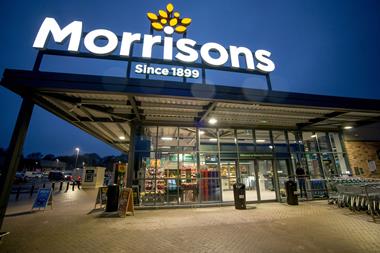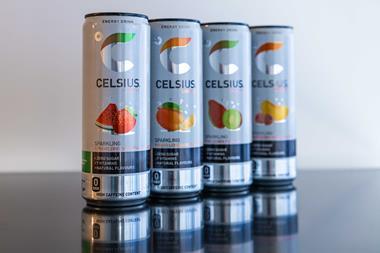If compliance is to improve, suppliers as well as retailers must be more proactive says Siân Harrington
It’s a common supplier whinge: “You strike a deal with the person behind the desk, only to find what has been agreed is not executed in store. We are being screwed and enough is enough.”
But isn’t it time brand owners stopped blaming retailers and started to take a smarter approach to the issue?
Compliance is a huge problem and suppliers and retailers are quick to play the blame game. Non-compliance - be it in stock replenishment, implementation of planograms, promotions or point of purchase material - is one of the biggest supplier bugbears. It’s not difficult to see why.
Nick Widdowson, merchandising manager at Unilever Bestfoods and vice chairman of industry association POPAI, estimates that £785m is spent annually on POP materials yet average implementation in store currently runs at 50%. “While the majority of high value POP is implemented, clearly there is a massive issue to be addressed in terms of compliance overall,” he says.
But it is an issue that suppliers as well as retailers need to address - or risk losing their power to influence shoppers at the point of purchase, suggests Sainsbury retail director Adam Fowle.
“There is no such thing as national non-compliance day. If suppliers want things to happen they need to be clear and simple. If stores are getting it wrong en masse, they are probably not doable,” he says.
As compliance moves up retailers’ agendas so the whole area of promotions, POP and display is under scrutiny as never before. For a start, there is likely to be a clampdown on unauthorised activity, which ironically could hit those very suppliers who regularly moan about implementation but who have in fact benefited from the extra space gained by their field force.
“For years suppliers have complained about compliance levels; this is a ‘chicken and egg’ situation where they feel compliance is so low that they must send in field forces to stores,” says Alison White, director of field marketing agency Logobrand.
“The ‘good’ suppliers brief their agencies to work within agreed promotional plans. However, it is not uncommon for suppliers to give field forces unauthorised POS and a brief to gain extra space. This, arguably, makes the situation in store worse, with display space being given on local levels to unauthorised PoS, thus reducing the space available for authorised activity.”
Tesco is one retailer cracking down on unauthorised material so those promotions agreed with head office get the instore space. It also plans to reduce the number of promotions it runs to around 100.
“If half the money spent on activity does not reach the consumer, how much better might results be if more investment went into ensuring promotions were properly implemented and that fewer were actually run?” asks Colin Harper, MD of Storecheck. However, many brand owners fail to take into account the role of the store manager, says Rob Barker, MD of newly launched research service Shopper Insights. Yet this is vital in the battle to tackle non-compliance.
“Store managers have so much to do. Suppliers should adopt the philosophy of making it easy for the manager.”
Widdowson believes store managers are unfairly blamed and the responsibility for compliance has to be assumed collectively by manufacturers and retailers.
“It is both simplistic and unhelpful to blame store managers for poor compliance. If POP is to be implemented consistently, it is vital in the first place that the commercial benefit to the retailer is clearly understood and communicated at store level,” he says.
“Likewise, we need to recognise there isn’t always the resource available in store that is necessary to achieve total compliance. It is clearly the responsibility of manufacturers to plan ahead of busy periods and ensure implementation is a straightforward and easy process for staff on the shop floor.”
Brand owners could also do more to understand different store environments. Says Barker: “It’s a battle for footfall at the moment and retailers are not sympathetic to things that hinder the store experience. A big promotion in a grotty environment will not work for brand or retailer. We have got to move to more targeted promotions.”
When it comes to space allocation, adds Harper: “The only way to overcome the problem is for the manufacturer to understand the key outlets better than the retailer.”
Adult soft drinks brand Shloer invested in research during Christmas 2001. It used its findings to present its 2002 promotions case to retailers, securing off-shelf space for the first time in Asda and additional stock in Sainsbury. According to finance director Giles Lee, compliance was much improved.
“It doesn’t really matter what you agree at head office. Buy-in at head office merely justifies what happens at a lower level. You have to know what works in store and do a selling job at that level. Convincing shop staff to put heavy bottles on shelf at their busiest time is difficult but, if you can prove it will sell and help them get their bonus, they will.”
Of course this is not to abdicate retailers from their responsibilities. There are still a key issues they need to tackle - the shockingly poor level of knowledge at head offices about fixturing, for instance. Simply confirming the number of gondola ends available can be tricky, says White.
And then there is the promotional paradox: the more successful the promotion, the more likely there is to be a replenishment problem and the more likely shelf space will be allocated to rival brands.
But there is much brand owners can do to encourage compliance. After all, retailers are not concerned with individual brands but about availability and promotional issues in general.If manufacturers want to grow their brands, they will have to stop whingeing and start taking a more strategic approach at store level.
It’s a common supplier whinge: “You strike a deal with the person behind the desk, only to find what has been agreed is not executed in store. We are being screwed and enough is enough.”
But isn’t it time brand owners stopped blaming retailers and started to take a smarter approach to the issue?
Compliance is a huge problem and suppliers and retailers are quick to play the blame game. Non-compliance - be it in stock replenishment, implementation of planograms, promotions or point of purchase material - is one of the biggest supplier bugbears. It’s not difficult to see why.
Nick Widdowson, merchandising manager at Unilever Bestfoods and vice chairman of industry association POPAI, estimates that £785m is spent annually on POP materials yet average implementation in store currently runs at 50%. “While the majority of high value POP is implemented, clearly there is a massive issue to be addressed in terms of compliance overall,” he says.
But it is an issue that suppliers as well as retailers need to address - or risk losing their power to influence shoppers at the point of purchase, suggests Sainsbury retail director Adam Fowle.
“There is no such thing as national non-compliance day. If suppliers want things to happen they need to be clear and simple. If stores are getting it wrong en masse, they are probably not doable,” he says.
As compliance moves up retailers’ agendas so the whole area of promotions, POP and display is under scrutiny as never before. For a start, there is likely to be a clampdown on unauthorised activity, which ironically could hit those very suppliers who regularly moan about implementation but who have in fact benefited from the extra space gained by their field force.
“For years suppliers have complained about compliance levels; this is a ‘chicken and egg’ situation where they feel compliance is so low that they must send in field forces to stores,” says Alison White, director of field marketing agency Logobrand.
“The ‘good’ suppliers brief their agencies to work within agreed promotional plans. However, it is not uncommon for suppliers to give field forces unauthorised POS and a brief to gain extra space. This, arguably, makes the situation in store worse, with display space being given on local levels to unauthorised PoS, thus reducing the space available for authorised activity.”
Tesco is one retailer cracking down on unauthorised material so those promotions agreed with head office get the instore space. It also plans to reduce the number of promotions it runs to around 100.
“If half the money spent on activity does not reach the consumer, how much better might results be if more investment went into ensuring promotions were properly implemented and that fewer were actually run?” asks Colin Harper, MD of Storecheck. However, many brand owners fail to take into account the role of the store manager, says Rob Barker, MD of newly launched research service Shopper Insights. Yet this is vital in the battle to tackle non-compliance.
“Store managers have so much to do. Suppliers should adopt the philosophy of making it easy for the manager.”
Widdowson believes store managers are unfairly blamed and the responsibility for compliance has to be assumed collectively by manufacturers and retailers.
“It is both simplistic and unhelpful to blame store managers for poor compliance. If POP is to be implemented consistently, it is vital in the first place that the commercial benefit to the retailer is clearly understood and communicated at store level,” he says.
“Likewise, we need to recognise there isn’t always the resource available in store that is necessary to achieve total compliance. It is clearly the responsibility of manufacturers to plan ahead of busy periods and ensure implementation is a straightforward and easy process for staff on the shop floor.”
Brand owners could also do more to understand different store environments. Says Barker: “It’s a battle for footfall at the moment and retailers are not sympathetic to things that hinder the store experience. A big promotion in a grotty environment will not work for brand or retailer. We have got to move to more targeted promotions.”
When it comes to space allocation, adds Harper: “The only way to overcome the problem is for the manufacturer to understand the key outlets better than the retailer.”
Adult soft drinks brand Shloer invested in research during Christmas 2001. It used its findings to present its 2002 promotions case to retailers, securing off-shelf space for the first time in Asda and additional stock in Sainsbury. According to finance director Giles Lee, compliance was much improved.
“It doesn’t really matter what you agree at head office. Buy-in at head office merely justifies what happens at a lower level. You have to know what works in store and do a selling job at that level. Convincing shop staff to put heavy bottles on shelf at their busiest time is difficult but, if you can prove it will sell and help them get their bonus, they will.”
Of course this is not to abdicate retailers from their responsibilities. There are still a key issues they need to tackle - the shockingly poor level of knowledge at head offices about fixturing, for instance. Simply confirming the number of gondola ends available can be tricky, says White.
And then there is the promotional paradox: the more successful the promotion, the more likely there is to be a replenishment problem and the more likely shelf space will be allocated to rival brands.
But there is much brand owners can do to encourage compliance. After all, retailers are not concerned with individual brands but about availability and promotional issues in general.If manufacturers want to grow their brands, they will have to stop whingeing and start taking a more strategic approach at store level.














No comments yet